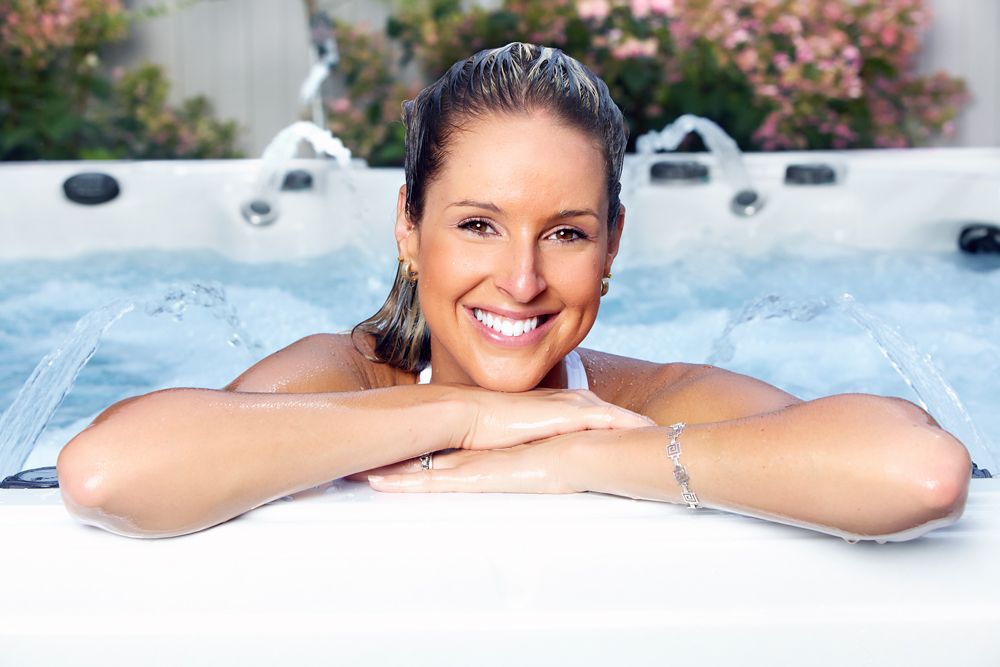WATER CHEMISTRY
A SIMPLE EXPLANATION OF pH, TOTAL ALKALINITY AND CALCIUM HARDNESS
Hot tubs are not miniature swimming pools and the water treatment parameters are much different. Because hot tub water is maintained at a higher temperature, it provides more opportunity for bacteria growth which could result in skin or urinary tract infections if not properly maintained. The terms tossed about like PPM (parts per million), pH, total alkalinity, hardness, etc. can be confusing or even scary but they don’t have to be. Following is an explanation of water chemistry terms and how they affect you and your hot tub.
pH
In chemistry, pH (power or potential of Hydrogen) is a measure of the acidity or basicity of a liquid. Readings less than 7 are considered acidic and above 7 are basic or alkaline. Pure water is close to 7. Soft water is commonly acidic while hard water is commonly alkaline. The ideal range for a hot tub is 7.2 to 7.8. pH
Proper water balance (pH) in your hot tub is extremely important. Spa sanitizers work best when the pH is within the 7.2 to 7.8 range. High pH can result in cloudy water and scale formations. If proper pH is not maintained you run the risk of damaging heater elements, pump seals, and other metal parts.
Listed are the most common problems associated with both high or low pH levels.
IMPORTANT NOTE: Before adding any chemicals to adjust your pH levels, the total alkalinity must be balanced first.
IMPORTANT NOTE: Before adding any chemicals to adjust your pH levels, the total alkalinity must be balanced first.
High pH Readings
Poor Sanitizer Efficiency
Cloudy Water
Scale Formation
Shorter Filter Runs
Skin and Eye Irritations
Cloudy Water
Scale Formation
Shorter Filter Runs
Skin and Eye Irritations
Scale Formation
Shorter Filter Runs
Skin and Eye Irritations
Shorter Filter Runs
Skin and Eye Irritations
Skin and Eye Irritations
Low pH Readings
Poor Sanitizer Efficiency
Corroded Metals/Equipment
Skin and Eye Irritation
Etched or Stained Plaster
Destruction of Total Alkalinity
Corroded Metals/Equipment
Skin and Eye Irritation
Etched or Stained Plaster
Destruction of Total Alkalinity
Skin and Eye Irritation
Etched or Stained Plaster
Destruction of Total Alkalinity
Etched or Stained Plaster
Destruction of Total Alkalinity
Destruction of Total Alkalinity
Total Alkalinity
Believe it or not, total alkalinity is even more important than pH. Total alkalinity is the ability to control pH. If pH were the equivalent of a street address in Google maps, then total alkalinity would be the city. You simply can't get to an exact address without being in the right city. This is why you test and adjust the total alkalinity before the pH. Total alkalinity, like pH can be affected by rain, acidic sanitizers, addition of fill water and other product introductions. The ideal range for total alkalinity is generally listed as 80 to 120 PPM but if you are using chlorine or bromine as a sanitizer, a range of 125 to 200 PPM is probably OK as long as no scaling occurs. Be aware that pH and total alkalinity are closely related and that pH lowering chemicals will lower alkalinity as well. Here is a list of problems that can result if the total alkalinity is out of range:
High Total Alkalinity
Hard to Change pH
Scale Formation
Cloudy Water
Skin and Eye Irritation
Poor Sanitizer Efficiency
Scale Formation
Cloudy Water
Skin and Eye Irritation
Poor Sanitizer Efficiency
Cloudy Water
Skin and Eye Irritation
Poor Sanitizer Efficiency
Skin and Eye Irritation
Poor Sanitizer Efficiency
Poor Sanitizer Efficiency
Low Total Alkalinity
Rapid Changes In pH
Corroded Metals/Equipment
Skin and Eye Irritation
Corroded Metals/Equipment
Skin and Eye Irritation
Skin and Eye Irritation
Calcium Hardness
Also referred to as "total hardness", calcium hardness is a measurement of minerals in your water including calcium and magnesium. When your spa does not contain enough calcium, the water will draw other minerals such as copper, aluminum and iron from heater elements, pump seals and other metallic internal parts resulting in equipment corrosion. Too much calcium or hardness will result in scale formation and cloudy water. If you are filling the tub through a water softener, your total hardness is likely to be low. If you are filling from a well you may have high hardness levels. There is some latitude in the total hardness for spas. The ideal range is 200 to 400 PPM with a minimum of 150 PPM and a maximum of 1000 PPM. Here are problems that can occur due to too low or too high hardness levels.
Hardness Too Low
Deterioration of Metal Components in Spa Equipment
Unwanted foam
Unwanted foam
Hardness Too High
Scale Formation On Surfaces
Cloudy Water
Cloudy Water

